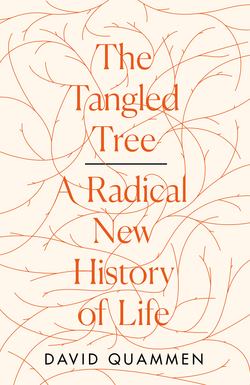Читать книгу The Tangled Tree: A Radical New History of Life - David Quammen, David Quammen - Страница 27
19
ОглавлениеAfter his death in December 2012, Woese’s files of scientific correspondence, manuscripts, journal articles, and other materials went to the University of Illinois Archives to be indexed, curated, and preserved. The archives are held in several different locations, one of which is the Archives Research Center, a sort of annex, housed in an old, barnlike building of red brick on Orchard Street near the south edge of the campus. A sign in front identifies this, confusingly but historically, as the Horticulture Field Laboratory; a bank of yew bushes and a riot of hostas guard the entrance. Inside, filed neatly in thirty-four boxes that can be accessed by request, are the Carl Woese Papers. I was working there at a table one hot July afternoon, reading through letters, looking for clues about the human side of this peculiar man, when John Franch arrived, wearing a dark T-shirt and a ball cap. Franch is the assistant archivist who was sent to clean out Woese’s lab after the funeral, and who knows the material found there better than anyone else. He had heard about my interest and wanted to show me something.
He led me toward the back of the building, where the roof arches high, and unlocked a door. This was one of the “vaults,” he told me, that formerly served for storing fruit—apples in particular—from the horticultural research orchards from which Orchard Street got its name. At one point, there were 125 varieties of apple grown just behind the building, and they came in by the basket and the crate to be stored here or pressed for cider and vinegar. Beyond the door, we entered an air-conditioned room, empty of apples now but lined along its left side with tall metal shelves, along its right side with tables. The shelves held hundreds of large, flat yellow boxes—the original packaging of Kodak medical X-ray films—representing the library of Woese’s RNA sequencing fingerprints. Each box was labeled along its edge with a date and the organism whose fragments were depicted.
Across the room, some films lay on the tables, where Franch had been working over them. He showed me three large sheets, carefully taped together, forming a triptych of images. I stared at the patterns of dark spots: amoebae galloping on a plain. To me, they made no particular sense. But to Woese, they had spoken eloquently of identity, relationship, evolution. If something was odd, he would have seen it.
This is delta H, Franch said.
